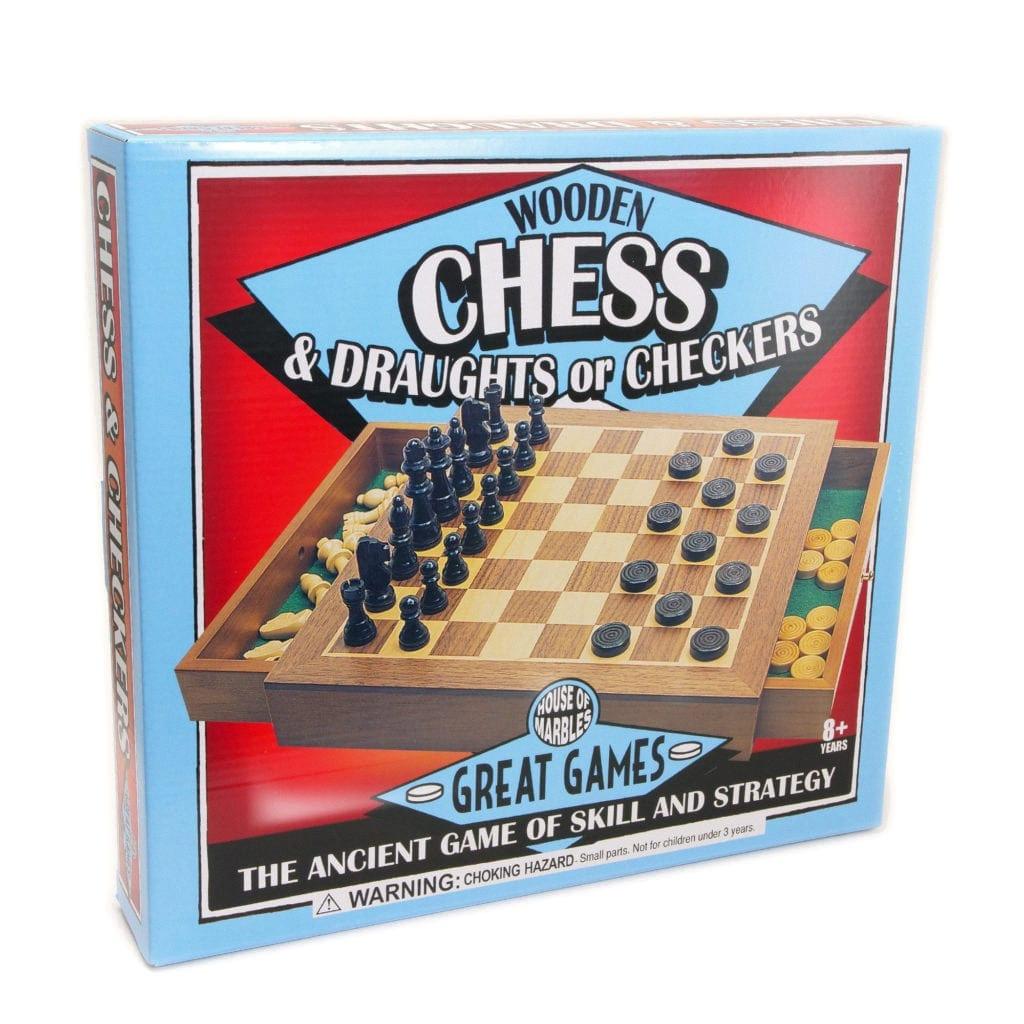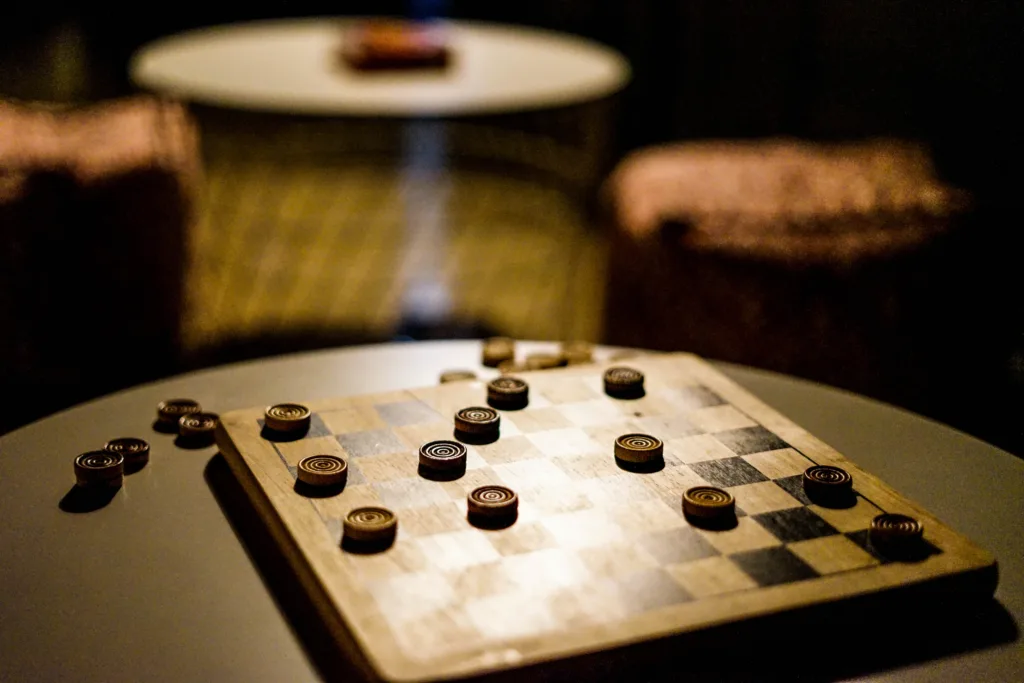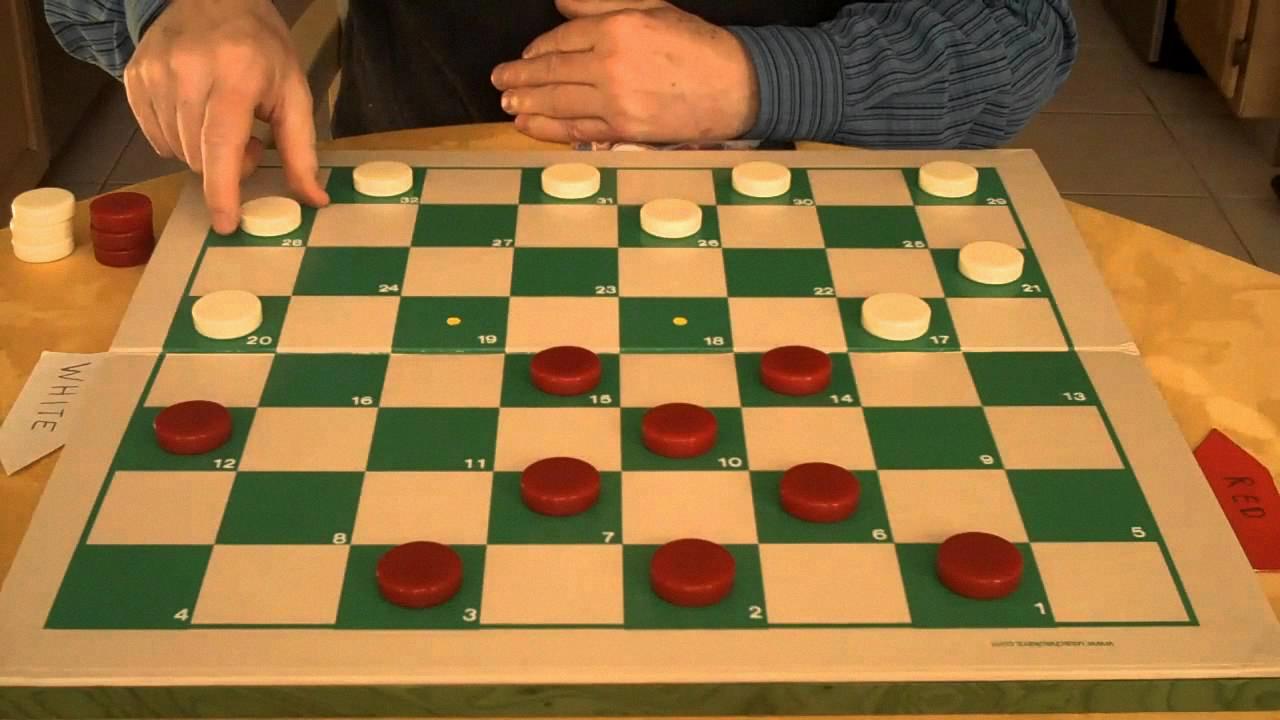Welcome to the exciting world of checkers! Checkers is a classic board game that has been played for generations. It is a game of strategy, skill, and patience. In this blog post, we will delve into the rules of checkers and answer the question on everyone’s mind: do you have to jump in checkers?
Firstly, let’s start with the basics of checkers. The game is played on a square board with 64 alternating light and dark squares. Each player starts with 12 pieces, whch are placed on the dark squares on their side of the board. The pieces can only move diagonally and can only move forward unless they are crowned as kings.
The objective of the game is to capture all of your opponent’s pieces or block them so they cannot make any more moves. A player can capture an opponent’s piece by jumping over it diagonally to a vacant square on the other side of the piece. If there is another opponent’s piece that can be captured after the first jump, the player must continue to make jumps until there are no more pieces that can be captured.
Now we come to the question at hand: do you have to jump in checkers? The answer is yes. In the English/American version of checkers, players are not allowed to pass up the opportunity to capture an opponent’s piece. If there is a piece that can be captured, the player must make the jump. This is known as the forced-jump rule and is the cornerstone of all tactics in checkers.
The forced-jump rule adds an extra layer of strategy and skill to the game. Players must carefully plan their moves and anticipate their opponent’s next move. They must also be aware of the possibility of multiple jumps in succession, as this can quickly turn the tide of the game.
Checkers is a classic board game that requires skill, strategy, and patience. The forced-jump rule is an integral part of the game and adds an extra layer of strategy and skill. So, the next time you sit down to play checkers, remember that you must always jump if it is possible to do so. Happy playing!
The Necessity of Jumps in Checkers
Jumps are mandatory in checkers because they force players to make strategic decisions about their moves and create a more dynamic and exciting game. Without the forced-jump rule, players coud simply move their pieces back and forth without the risk of losing them. The rule also encourages players to plan ahead and consider the consequences of their moves, as one poorly planned move could result in the loss of multiple pieces. Additionally, the forced-jump rule helps to prevent games from becoming stagnant and drawn out, as players are unable to simply avoid capturing their opponent’s pieces. Overall, the mandatory jumps in checkers add an important layer of strategy and excitement to the game, making it a classic and beloved pastime for generations.

Source: shop.houseofmarbles.com
Jumping Rules in Checkers
In checkers, jumping is allowed if a player’s piece is adjacent to an opponent’s piece and there is an empty square beyond the opponent’s piece. The player’s piece can then “jump” over the opponent’s piece and land on the empty square beyond, capturing the opponent’s piece in the process. Additionally, if there are multiple opponent’s pieces in a row with empty squares beyond them, the player’s piece can jump over all of them in a single turn. However, if a player has the option to make a regular move or a jump, they must choose the jump. The objective of the game is to capture all of the opponent’s pieces or to block them so they canot make any more moves.
Can a King Choose Not to Jump in Checkers?
Yes, a King in checkers can choose not to jump. If there are no jumps available, the King can move any distance along an unobstructed diagonal, either forward or backward, until it reaches an unoccupied square. However, if there is an opportunity to jump an opposing piece, the King must take that jump. The same rule applies to regular checkers, which can only move one space diagonally forward if there are no jumps available.
The Pressure of Playing Checkers
Yes, in English/American checkers (draughts), you are forced to take or capture an opponent’s piece if it is possible to do so. This means that if there is a move availabe that involves capturing an opponent’s piece, you are not allowed to make any other move. This rule applies to all pieces on the board, including kings. It is not possible to sacrifice your own piece to avoid taking an opponent’s piece. In other words, if you can capture an opponent’s piece, you must do so. This rule is one of the fundamental rules in the game of checkers and is crucial to creating a strategic and dynamic gameplay experience.
What to Do When There Are No Moves Left in Checkers
In checkers, if you find yourself in a situation where you are unable to make a move, then the game is over and your opponent is declared the winner. This is because in checkers, the objective is to capture all of your opponent’s pieces or to block them from making any moves. If you canot make any moves, it means that your opponent has successfully blocked all your options and has gained the upper hand. However, if both players are unable to make any moves, then the game ends in a tie. In summary, having no moves in checkers can lead to a loss for the player who is unable to make a move, and a win for the other player.

Consequences of Not Seeing a Jump in Checkers
In checkers, if a jump is available on the board but the player fails to see it, they have two options. The first option is to force the jump, meaning the player can take the opponent’s checker by moving their own checker over it in a diagonal direction, as long as there is an empty space behind the opponent’s checker. The scond option is to take the checker that should have been jumped. If the player chooses the second option, they forfeit the opportunity to make the jump. However, if the player chooses the first option and fails to make the jump, their opponent has the right to remind them of the jump and force them to make the move. It is important for players to pay close attention to the board and look for any possible jumps to avoid missing out on crucial moves that could potentially change the outcome of the game.
Are Double Jumps Required in Checkers?
No, double jumps are not mandatory in checkers. Players have the option to make a regular move or a jump if available. However, if a player has the opportunity to make a jump, they must do so. Furthermore, if a player makes a jump and lands in a position to make another jump, they must continue jumping until they can no longer make any more jumps. This means that multiple jumps can occur in a single turn, but they are not mandatory.
Can the King Piece Move Only One Space in Checkers?
No, Kings in checkers can move any number of spaces in any direction – forward, backward, sideways or diagonally. This is because when a piece reaches the last row of the opponent’s side, it is “crowned” and promoted to a King. Kings are more powerful than standard pieces as they can move in any direction and can jump over multiple opposing pieces in a single turn. However, it is important to note that standard pieces can only move one space forward or sideways.
Is Checkers a Game of Luck or Skill?
According to a consensus amog most adults, Checkers is considered a game that relies more on skill than on luck. This is because the game requires strategic planning, critical thinking, and the ability to anticipate your opponent’s moves. While luck can play a role in the game, such as the order in which the pieces are placed or the first moves made, it is ultimately the player’s skill that determines their success. Additionally, experienced players can often predict and control the outcome of the game by analyzing the board and making calculated moves. Therefore, Checkers can be seen as a game that rewards skillful play rather than relying solely on chance.

Source: youtube.com
Conclusion
In conclusion, checkers is a classic and highly strategic game that has been enjoyed by generations of players worldwide. Its simple yet complex rules make it an engaging game for all ages, and its forced-jump rule adds an extra level of excitement and challenge to the game. The game requires both defensive and offensive tactics, making it a great way to exercise the mind and improve critical thinking skills. With its rich history and widespread popularity, checkers remains one of the most beloved board games of all time. Whether playing for fun or in a competitive setting, checkers is sure to povide hours of entertainment and intellectual stimulation for players of all levels.
